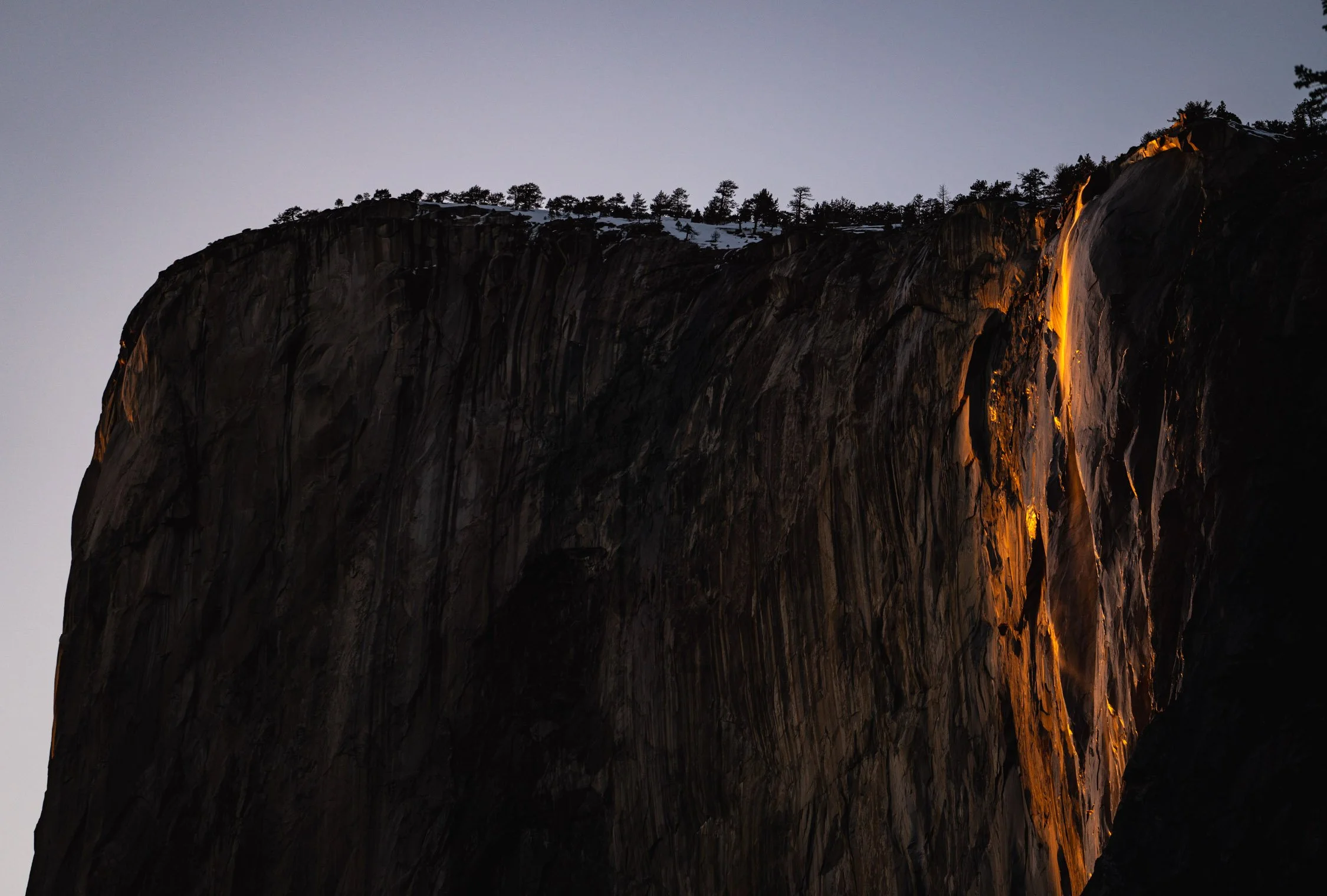In late January, the news cycle starts getting everyone excited about the potential of watching the lava-like waterfall flowing off the eastern cliff of El Capitan in Yosemite Valley. A spectacle that lasts between 5 and 30 minutes at sunset, between February 10th and March 1st, depending on a wide variety of factors; clouds, snowfall, outside temperature, snow accumulation, and permits, just to name a few.
Travelers come from wide and far hoping to see Firefall in all its glory, but Mother Nature doesn’t always cooperate. Some years, Firefall pours lava-like water as though it is an erupting volcano. In other years, Firefall doesn’t drip. Then, there are years that are somewhere in the middle. These variable conditions make planning a trip to watch Firefall in Yosemite can be quite challenging. However, it doesn’t have to be. Here are three filters you can look through to decide if making the trip to Yosemite Valley to see Firefall is worthwhile.
Do You Have to See Firefall On The Trip?
Of course, we all want to see Firefall in all of its glory, flowing a deep red, plummeting thousands of feet towards the valley floor, but would you be okay if you didn’t see this? The experience of watching Firefall lasts 30 minutes max, just before sunset, so you still have the entire day to explore Yosemite Valley in the winter.
Would a trip to Yosemite be worth it if you saw the sights like Half Dome, Yosemite Falls, El Capitan, and Tunnel View with a blanket of snow, or, went on other adventures like hiking, photography, rock climbing, starting a snowball fight with strangers? Would you be willing to plan your trip to be more than just watching Firefall, and transform your trip focus into a visiting Yosemite during the winter kind of trip instead? If you answered yes to this, you should go, regardless of conditions, and let Firefall be your sprinkles on top.
If You Have to Plan Weeks, or Months In Advance, How Much Time Do You Have?
The variable conditions of Firefall make seeing this annual event difficult if you only have a single day. So, if you have several days, your likelihood of seeing Firefall increases. But, how long is long enough? Three days would be short because weather systems can linger, whereas a week would provide enough time for conditions to improve or get worse. With that said, you can show up for a week and still not see Firefall. From friends, I’ve heard of people showing up for an entire season and only seeing Firefall flow once, or twice. So, what’s the solution, other than crossing your finger and saying good thoughts? Understanding what “perfect conditions” are for Firefall and showing up at the perfect time. It’s actually not that hard!
Can You Be Flexible And Seek Out The “Perfect” Conditions for Firefall?
Firefall does have a recipe for success, but, for everything to align, you will need to be flexible. So, here’s how you break the secret with the cheat code to seeing Firefall:
There needs to be a blanket of snow on top of El Capitan’s eastern slope
You need two days, in a row, above freezing to create a great flow, then the day of view needs to stay above 35F
Partially cloudy skies look the best, but no clouds are better for a greater flow
This all needs to align during the third week of February to have the longest viewing opportunity
That is what you need to have the greatest opportunity to see Firefall in Yosemite National Park
There are three lenses to look through for you to decide if heading to Yosemite Valley during the winter is worth it for you. From personal experience, I can tell you every time have gone to see Firefall, regardless if I see the lava-like waterfall, I have returned home a happier human. But, you are not me, so take these lenses and look through them, they will help you decide if the trip will be worth it for you.



